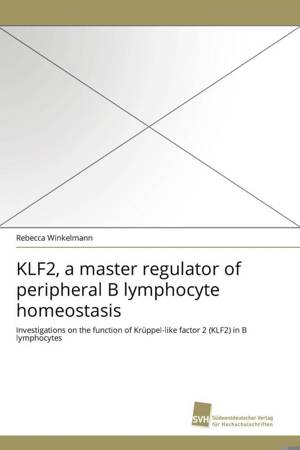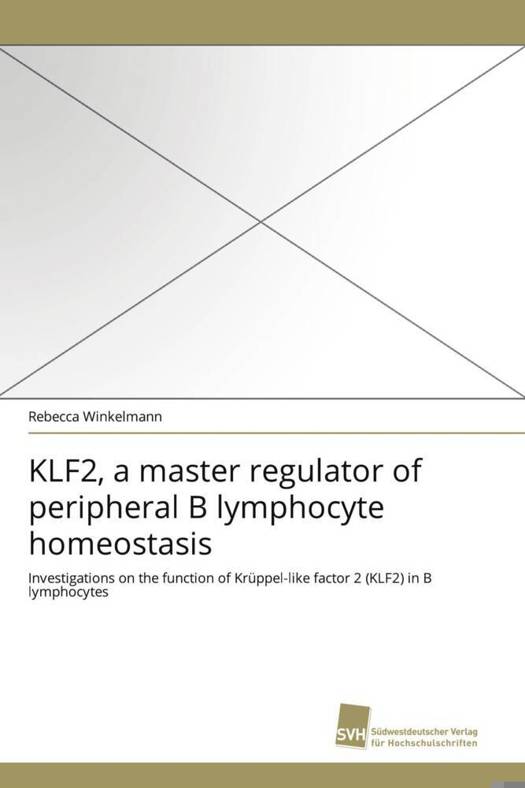
- Afhalen na 1 uur in een winkel met voorraad
- Gratis thuislevering in België vanaf € 30
- Ruim aanbod met 7 miljoen producten
- Afhalen na 1 uur in een winkel met voorraad
- Gratis thuislevering in België vanaf € 30
- Ruim aanbod met 7 miljoen producten
Zoeken
KLF2, a master regulator of peripheral B lymphocyte homeostasis
Rebecca Winkelmann
Paperback | Duits
€ 53,45
+ 106 punten
Omschrijving
Lymphocytes play a prominent role in the combat of infectious diseases. For a sufficient but limited immune response it is essential that migration and activation of lymphocytes are strictly controlled. The transcription factor KLF2 modulates T lymphocyte egress from lymphoid organs by regulating S1P1. This is not the case for B cells. Instead, KLF2 regulates homeostasis of B cells in peripheral lymphatic organs and homing of plasma cells to the bone marrow, presumably by controlling the expression of beta7 integrin. In mice with a B cell-specific deletion of KLF2, S1P1 expression on B cells was only slightly affected. Accordingly, all splenic B cell subsets were present, but their numbers were increased with a clear bias for marginal zone (MZ) B cells. In contrast, fewer peyers patches harboring less B cells, fewer B1 cells in the peritoneal cavity as well as recirculating B cells in the bone marrow were found. Upon thymus-dependent immunization, IgG titers were diminished and antigen-specific plasma cells were absent in the bone marrow. Furthermore this study provides first evidence that KLF2 is posttranslationally phosphorylated directly or indirectly by the PI3K signaling pathway.
Specificaties
Betrokkenen
- Auteur(s):
- Uitgeverij:
Inhoud
- Aantal bladzijden:
- 96
- Taal:
- Duits
Eigenschappen
- Productcode (EAN):
- 9783838125725
- Verschijningsdatum:
- 18/07/2011
- Uitvoering:
- Paperback
- Afmetingen:
- 150 mm x 220 mm
- Gewicht:
- 150 g

Alleen bij Standaard Boekhandel
+ 106 punten op je klantenkaart van Standaard Boekhandel
Beoordelingen
We publiceren alleen reviews die voldoen aan de voorwaarden voor reviews. Bekijk onze voorwaarden voor reviews.








